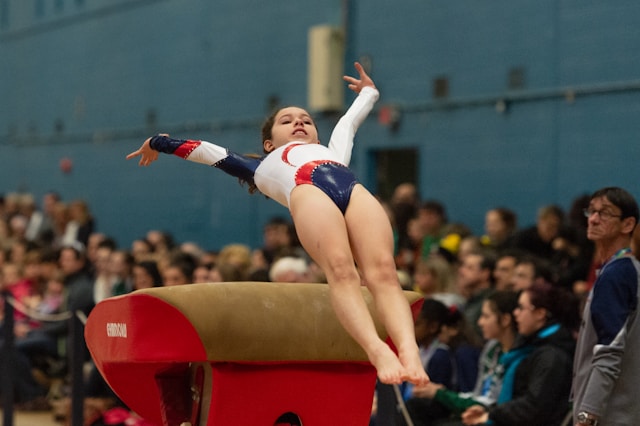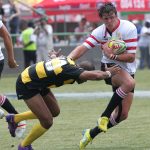Burnout among athletes is an increasingly pressing issue that affects performance, mental health, and overall well-being. UK sports teams must proactively address this problem to maintain high standards and support their players effectively. This article aims to provide comprehensive guidance on managing athlete burnout, incorporating insights from mental health specialists, sports scientists, and Metrifit, a leading athlete monitoring platform.
Understanding Athlete Burnout
Burnout in sports is not just about physical exhaustion; it’s a multi-faceted issue that involves emotional and mental fatigue. For UK sports teams to address player burnout effectively, they need to understand its root causes and symptoms.
A lire en complément : How can UK sports clubs effectively manage and treat concussions?
During intense training periods or competitive seasons, athletes are often subjected to rigorous schedules. This can lead to stress, fatigue, and ultimately burnout. The symptoms can manifest as a lack of motivation, poor performance, frequent injuries, and mental health issues such as anxiety or depression. Recognizing these signs early is crucial to implementing appropriate interventions.
Experts like sports scientists and psychologists advocate for comprehensive wellness monitoring. Tools like Metrifit allow coaches and teams to track an athlete’s physical and mental health closely. These platforms provide valuable data that can preempt burnout by identifying early warning signs.
Lire également : How can UK sports teams use gamification to improve training engagement?
Moreover, support from coaches and team members is essential. A high-performance environment should also be a supportive one where mental health is prioritized. Open communication between athletes and coaching staff can help address issues before they escalate. Therefore, understanding burnout’s complexities is the first step toward effective management.
Implementing Regular Monitoring and Feedback
Regular monitoring and feedback systems are instrumental in managing player burnout. These measures are not just about assessing performance but also about understanding the athlete’s overall well-being. The introduction of technology, such as Metrifit, has revolutionized how teams track and manage player health.
Metrifit allows for real-time tracking of various performance metrics, including physical activity, sleep patterns, and emotional states. By utilizing such a platform, coaches can make data-driven decisions to tailor training programs to each player’s needs. This personalized approach helps in reducing the risk of burnout.
Regular feedback sessions should be a staple in any sports team’s routine. These sessions provide an opportunity for players to voice their concerns and for coaches to offer constructive advice. Feedback should not only focus on physical performance but also on mental well-being. Creating an open dialogue can help athletes feel more supported and understood.
To further enhance the monitoring process, teams can employ sports psychologists who specialize in mental health. These professionals can conduct regular assessments and offer coping strategies to manage stress and anxiety. Combining technological tools with professional expertise creates a robust system to combat burnout.
Balancing Training and Recovery
One of the most effective ways to manage player burnout is by striking a balance between training and recovery. Overtraining is a common cause of burnout, and it’s essential to incorporate adequate rest periods into the training schedule.
Athletes often push their limits to achieve high performance, but without proper recovery, the risk of burnout increases. Coaches should design training programs that include rest days and lighter training sessions. This approach allows the body and mind to recuperate, improving overall performance and reducing the likelihood of burnout.
Recovery is not just about physical rest but also mental rejuvenation. Techniques such as mindfulness, meditation, and relaxation exercises can be beneficial. Encouraging players to engage in activities they enjoy outside of sports can also help them unwind and recharge.
Nutritional support plays a vital role in recovery. A balanced diet rich in essential nutrients helps in muscle repair and mental clarity. Nutritionists can work alongside coaches to develop meal plans that support both training and recovery phases.
Utilizing technology like Metrifit can also help monitor recovery. The platform can track sleep patterns, stress levels, and other recovery indicators. This data allows coaches to adjust training programs accordingly, ensuring that athletes are not pushed beyond their limits.
Providing Mental Health Support
Mental health is a critical component of an athlete’s overall well-being. Teams must prioritize mental health support to effectively manage player burnout. This involves creating an environment where athletes feel comfortable discussing their mental health issues.
Sports psychologists and counselors can offer invaluable support. These professionals can conduct workshops on stress management, coping strategies, and mental resilience. Regular one-on-one sessions can also help athletes navigate the pressures of competitive sports.
Additionally, promoting a culture of mental health awareness within the team is crucial. Coaches and team leaders should lead by example, encouraging open discussions about mental health. This can help reduce the stigma associated with mental health issues and make athletes feel more supported.
Technology can also play a role in mental health support. Platforms like Metrifit can track emotional well-being and provide insights into an athlete’s mental state. This data can help in identifying issues early and implementing appropriate interventions.
Peer support is another valuable aspect. Team members can offer support to each other, creating a sense of camaraderie and understanding. Organizing team-building activities can strengthen these bonds and create a supportive environment.
Educating Coaches and Staff
Educating coaches and support staff about player burnout is vital for effective management. Knowledgeable coaches can implement strategies to prevent burnout and support athletes more effectively.
Training programs can be conducted to educate coaches about the signs and symptoms of burnout. These programs can also cover techniques for managing stress, balancing training and recovery, and providing mental health support. Coaches should be equipped with the skills to recognize early warning signs and take proactive measures.
Incorporating tools like Metrifit into the training regime requires proper training. Coaches should be well-versed in using the platform to monitor player health and performance. Understanding how to interpret the data and make informed decisions is crucial for preventing burnout.
Continuous professional development should be encouraged. Coaches and support staff can attend workshops, seminars, and conferences to stay updated on the latest research and best practices in sports science and mental health. This ongoing education ensures that the team is equipped with the most effective strategies to manage player burnout.
Creating a holistic support system involves collaboration between coaches, sports scientists, psychologists, and nutritionists. A well-rounded approach that addresses both physical and mental health can significantly reduce the risk of burnout.
Managing player burnout requires a multifaceted approach that involves understanding the root causes, implementing regular monitoring and feedback, balancing training and recovery, providing mental health support, and educating coaches and staff. UK sports teams can significantly enhance their performance and ensure the well-being of their athletes by adopting these best practices.
The use of technology, such as Metrifit, can provide valuable insights into player health and performance, allowing for data-driven decisions. Creating a supportive environment where mental health is prioritized and open communication is encouraged is crucial for preventing burnout.
By implementing these best practices, UK sports teams can create a high-performing yet supportive environment that promotes both physical and mental well-being. This holistic approach ensures that athletes can perform at their best while maintaining a healthy balance between training and recovery.











